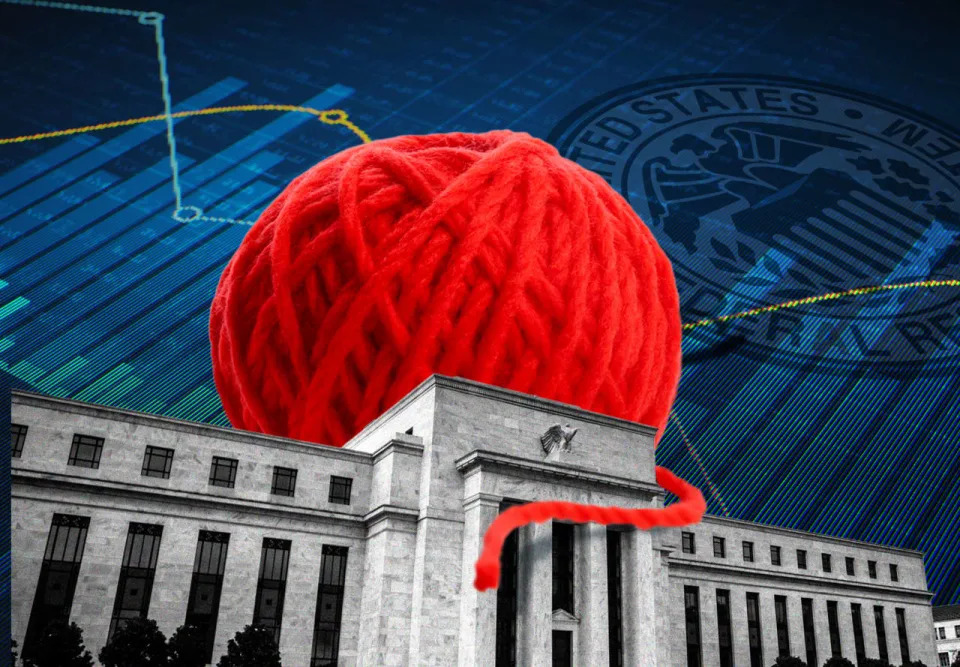How the Fed’s rate decision could unravel a big bond-market recession bet

The stakes for investors have been running high ahead of a historic rate cut expected from the Federal Reserve on Wednesday.
The Dow Jones Industrial Average DJIA pushed deeper into record territory this week as stock-market bulls cheered the prospect of the Fed’s first rate cut in four years. Investors hope the central bank’s next moves could help erase some of the uncertainty gripping markets in recent weeks, while also potentially helping fortify a soft landing for the economy.
But for investors with a more cantankerous view of the Fed’s approach to rates — and the economy — there’s the bond market, which has been flashing confusing and even contradictory recession signals lately.
Take credit spreads, or the extra return investors earn on bonds issued outside of the roughly $28 trillion Treasury market, which in practical terms should help compensate investors for headaches that can arise suddenly in markets — such as turbulence, liquidity woes and default risks.
Perhaps surprisingly, spreads in 2024 have been clinging to the lows of the pandemic, even as recession concerns have been rising. From that perspective, they signal no big worries from investors.
Long-term Treasury yields have been falling too, plumbing the year’s lows. Oddly, that suggests a flight to quality from investors unnerved by what could lurk on the horizon.
“People were very comfortable with a soft landing — or no landing,” said Neil Sutherland, a portfolio manager at Schroders, which had $978 billion in assets under management in June.
That changed, however, as the labor market weakened and other economic data started to spook investors. With that backdrop, the 10-year Treasury BX:TMUBMUSD10Y was near 3.68%, around the lows of the year, according to Dow Jones Market Data.
“People have definitely become more nervous about the economy over the past two to three months,” Sutherland told MarketWatch. With inflation easing and the labor market cooling, he thinks the Fed should cut rates on Wednesday by 50 basis points, instead of an ordinary rate cut of 25 basis points.
“People are always looking in the rear-view mirror, but we need to look forward,” he said.
Related: A Fed interest-rate cut could make small-cap stocks a good investment now
Recession, or slower growth
The Fed controls short-term rates, which is why its hikes since 2022 opened the window for investors to earn roughly 5% on money socked away in Treasury bills, BX:TMUBMUSD03M money-market funds and other cash-like investments.
See : Interest rates are dropping. Why so many investors are clinging to cash, CDs and savings accounts.
But longer-term Treasury yields, like the benchmark 10-year rate, tend to serve as a barometer for the economy, because those rates are used to price things like auto loans and mortgages.
Borrowers repay the debt in monthly increments, plus interest, over several months, years or decades. The goal of a lender, or bond investor, is to get paid to act as a creditor for a set period of time, but without overburdening a borrower and risking a default.
Longer-term Treasury yields now suggest the Fed will be dramatically cutting rates in ways previously reserved only for an economy at risk of heading off a cliff.
So, which market is right? “There is a bit of a dislocation, if you will, among different markets,” said Danny Zaid, a bond portfolio manager at TwentyFour Asset Management.
“Treasurys are telling you we will see a slowing, and a risk of recession,” he said. “Credit spreads, on the other hand, are pricing in a soft landing.”
As the odds of a recession edge up as economic data weakens, it’s still hard to see one as imminent, especially with the unemployment rate registering closer to 4% in August than 5%.
That hasn’t stopped Wall Street from becoming increasingly wary about a Fed mistake, where central bankers already might have kept rates high for too long, putting the wheels of a recession in motion that could be hard to thwart with a few rate cuts.
Borrowing costs for households, corporations and the U.S. government shot up over the past two years as the Fed raised interest rates to roughly a 20-year high to tame inflation, while also taking some strength out of the labor market.
“This forthcoming reduction in interest rates could ultimately allow for consumers to see lower monthly payments,” said Michele Raneri, head of U.S. research and consulting at TransUnion, in emailed comments Friday.
But it’s less clear if Fed rate cuts will spur households to refinance a wave of higher interest-rate debt or if the lending spigots will reopen more broadly to riskier borrowers, she said.
What’s at stake
Among the biggest risks for markets would be inflation levels that stall out above the Fed’s 2% yearly target, which could pave the way for a much slower pace to lower rates.
Stickier, if lower, inflation could disappoint investors counting on sharply lower rates. It also could inject more volatility into stocks and bonds, a now familiar risk in the wake of the regional-banking crisis in 2023.
The flip side could be a dramatically deteriorating economic backdrop, including spiking consumer delinquencies, or the economy starting to shed jobs at a rapid pace. Or households could simply close their wallets.
“You want to be cautious in this type of environment,” Zaid at TwentyFour Asset Management said, adding that his group has an up-in-quality bias.
“In fixed income, we think credit will outperform government bonds,” he said, pointing to steep rate cuts priced into the Treasury market.
Sutherland at Schroders said the 10-year rate moving lower to 3% wasn’t “unreasonable,” and that better opportunities to allocate to riskier parts of credit could arise in the months ahead.
“We do expect volatility to pick up over the next three to six months,” he said.
The Dow DJIA finishing Tuesday at its second-highest level in history, while the S&P 500 index SPX ended 0.6% from its previous record in July and the Nasdaq Composite Index COMP was 5.5% off its prior peak this summer, according to Dow Jones Market Data.




